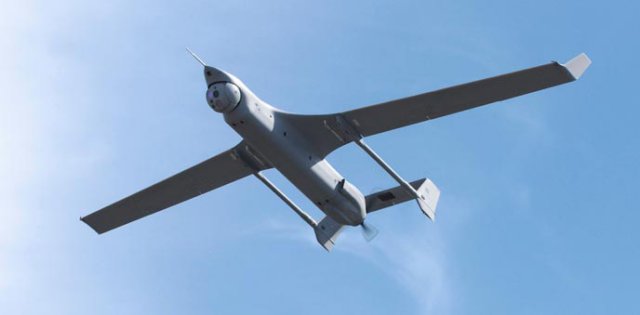Marines witnessed the first flight of the service’s newest small unmanned aircraft on January 22 at the Marine Corps Air Ground Combat Center in Twentynine Palms, California.
As part of the RQ-21A Small Tactical Unmanned Aircraft System (STUAS) Early Operational Capability (EOC), personnel from Marine Unmanned Aerial Vehicle Squadron (VMU) 2 and 3 and Insitu operators exercised the current configuration of Insitu’s Integrator for the two-hour maiden flight.
“The lessons learned from this flight and all operations that will be conducted at Twentynine Palms are invaluable,” said Lt. Col. John Allee, STUAS integrated product team co-lead at Pax River. “It will help our Marines fully understand how to operate the system when in theater.”
Insitu delivered one EOC system, which is the current configuration of the company’s Integrator, to Twentynine Palms early in January. The EOC contract option allows for up to 30 months of contractor-provided training and logistics services for the Integrator system. The team at Pax River received the second EOC system January 12.
“This is a substantial achievement for the team” said Heather Bromley, STUAS IPT co-lead. “To go from contract award to an operable system in 16 months is a testament to the responsiveness of both the government and contractor personnel.”
A CONUS-based deployment for EOC allows the Navy and Marine Corps to train operators, collect additional performance data and support development for Initial Operational Capability (IOC). The government-industry team will continue to develop the RQ-21A configuration for initial and full operational capability while the EOC system is deployed with VMU-3.
RQ-21A will have payload capacity to support multi missions in a single sortie. Its sensor package will include Electro-Optic, mid-wave infrared cameras with an infrared marker and laser rangefinder.
“We are very excited to deploy an asset that has a greater performance capability with a significantly larger payload, mass, volume and power than intelligence, surveillance and reconnaissance services available in theater today,” said Marine Col. Jim Rector, Navy and Marine Corps Small Tactical UAS programme manager.
RQ-21A will eventually replace the Navy and Marine ISR services contract in which current ISR missions are conducted in Iraq, Afghanistan and shipboard. The system will provide battlefield commanders with an organic capability 24/7, for real-time, actionable intelligence, surveillance and reconnaissance. “The appetite for ISR has been insatiable,” Rector said. “There is an increased demand for ISR capability in theater; and with fewer boots on the ground, we need this asset more than ever.”
Source: Defence Professionals

